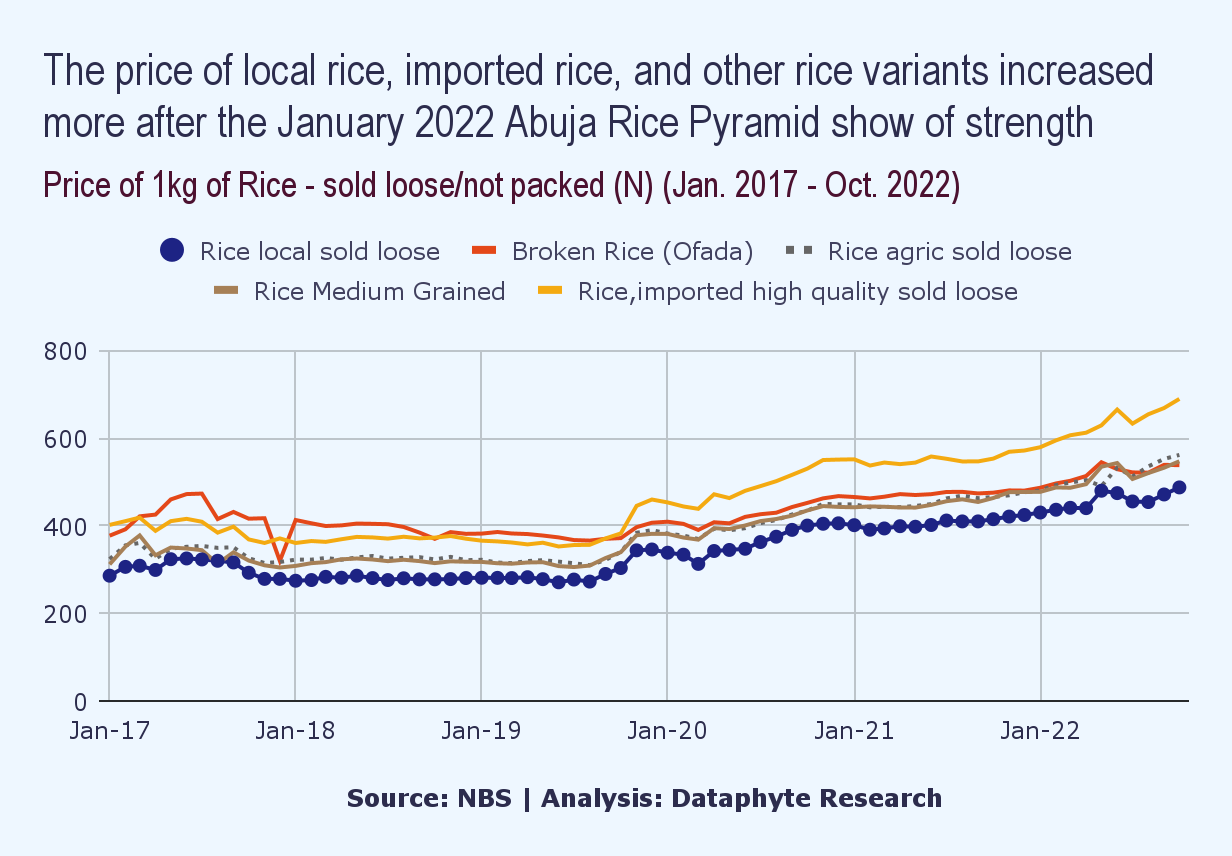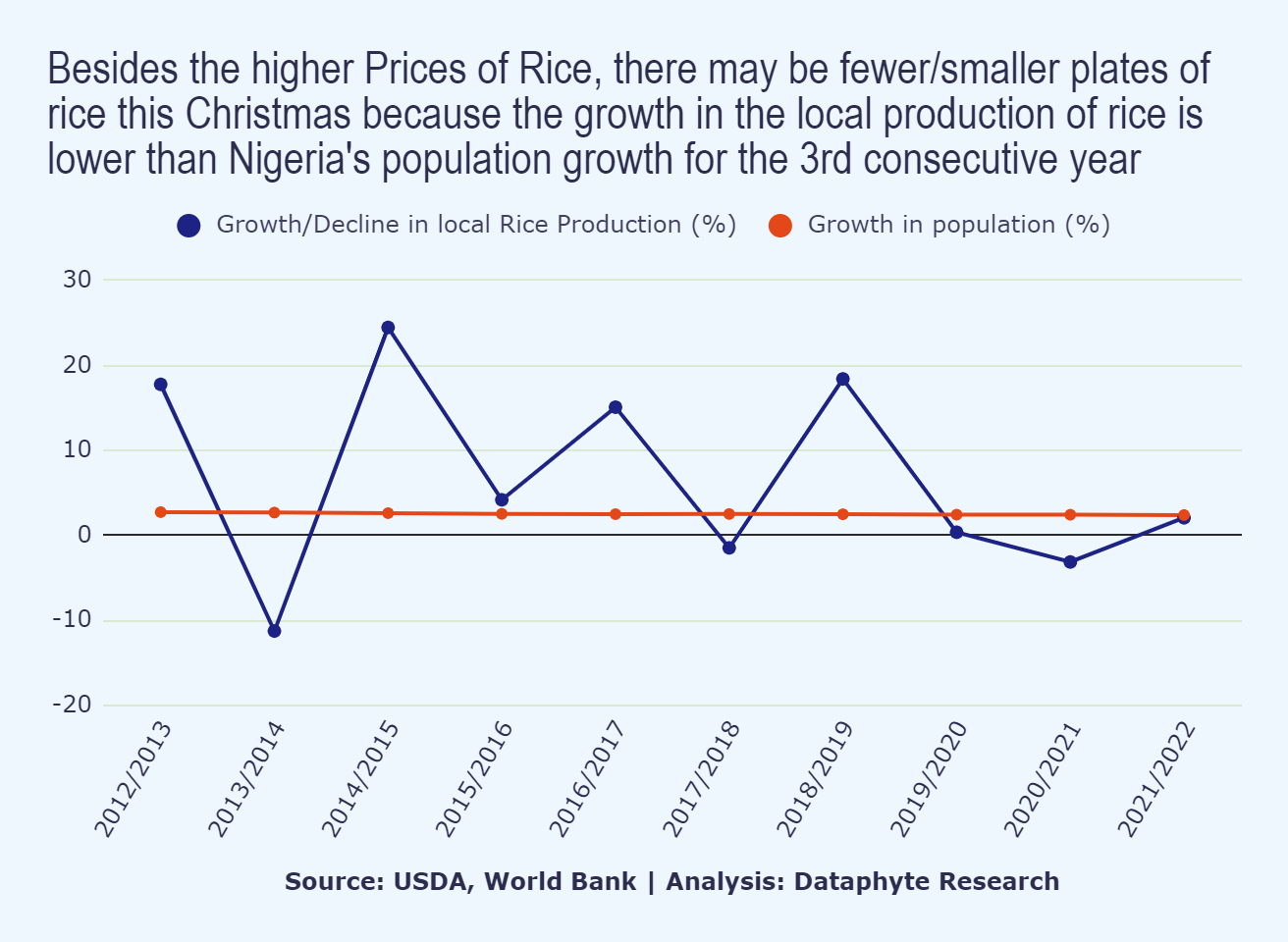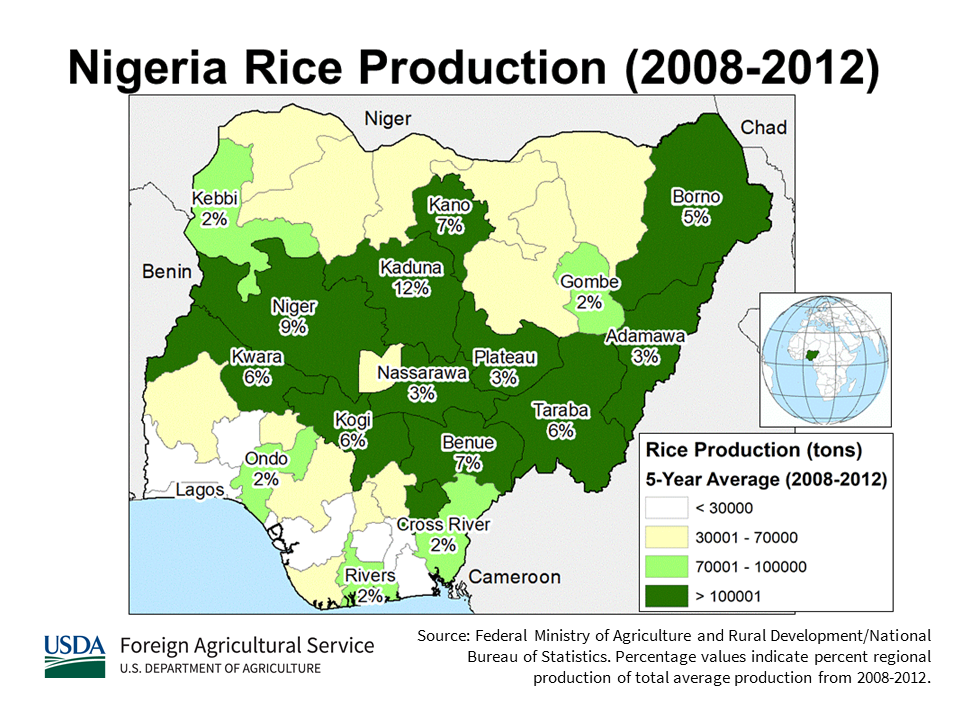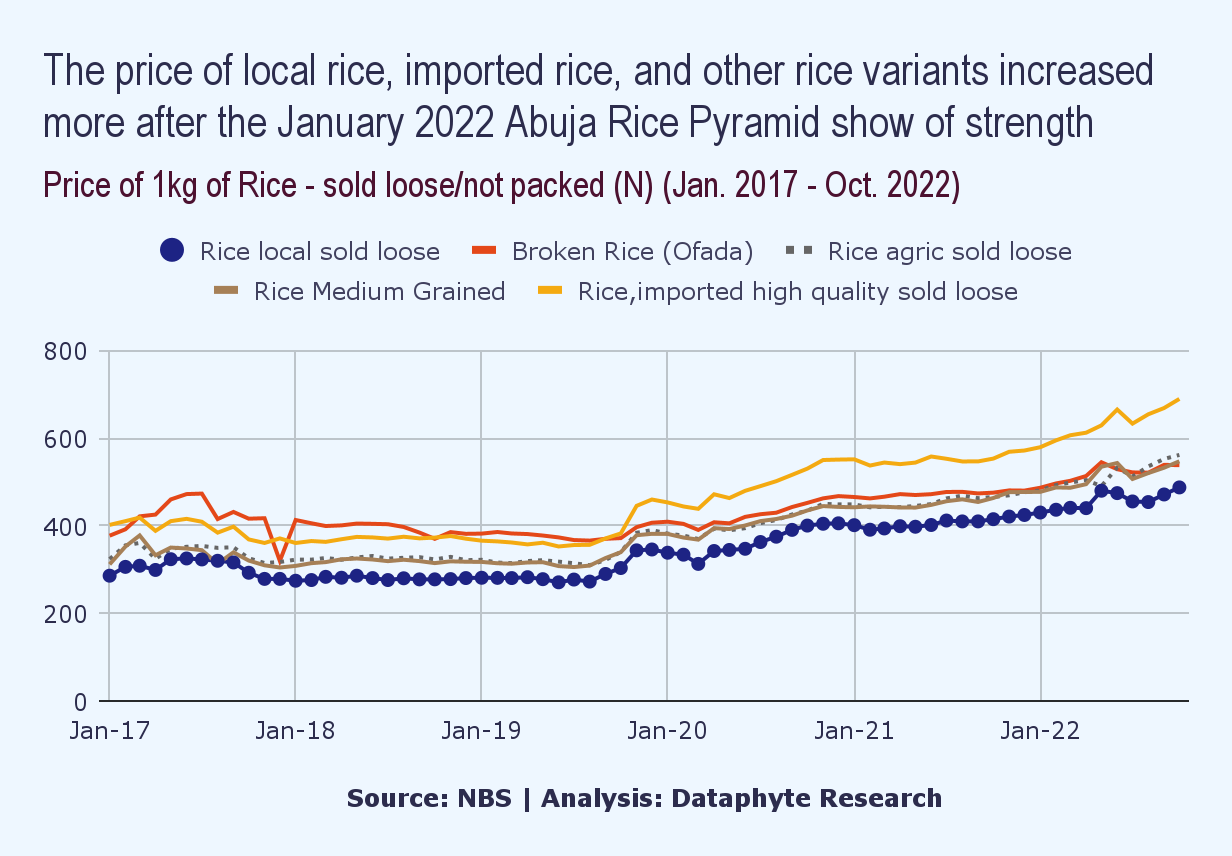This Christmas could be the last Muhammadu Buhari will celebrate in Aso Rock as a President if he does not run for Nigeria’s highest office in 2031.
And little wonder, at the beginning of the year, he rallied all the bags of rice in the country to Abuja to showcase to the people and the world that the country now produces abundant and affordable rice for everyday consumption, especially during his last presidential Christmas.
“As President Buhari unveiled the largest rice pyramid in the world on Tuesday, January 18, 2022, the prevailing message of the event was an increase in local rice production and cheaper rice for Nigerians”, Dataphyte reported.

But Mr Buhari’s Rice Pyramids have vanished, together with the Naira value to purchase them and other foods.

Besides the cut-throat price of rice and other foods, the prices of non-food items and other services have risen to unprecedented levels this year at the same time with increasing unemployment, fuelling fears of dicey yuletide celebrations.

Ultimately, a decline in local rice production and yield in 2022, coupled with a population growth that exceeds growth in rice production for three consecutive years, may contribute to fewer and smaller plates of rice this Christmas.
Buhari’s Ricey Yearnings
At the top of Mr Buhari’s list of agricultural products needing financial intervention is rice production.
The federal government launched the Anchor Borrowers Programmes, a development finance initiative by the Central Bank of Nigeria (CBN), in November 2015.
According to the CBN, the Anchor Borrowers Programme targets 9 exclusive agricultural commodities:
I. Cereals (Rice, Maize, wheat etc.)
II. Cotton
III. Roots and Tubers (Cassava, Potatoes, Yam, Ginger etc.)
IV. Sugarcane
V. Tree crops (Oil palm, Cocoa, Rubber etc.)
VI. Legumes (Soybean, Sesame seed, Cowpea etc.)
VII. Tomato
VIII. Livestock (Fish, Poultry, Ruminants etc.)
IX. Any other commodity that may be decided upon by the
Why Rice?
Rice is the commonest staple food in Nigeria, with no close substitute. Insufficient local production and import of rice lead to the scarcity of these grains, contributing significantly to food inflation and general inflation.
To this end, President Buhari said the launch of the rice pyramids marked the beginning of lower rice costs in the market. “I am aware that the bags of paddy will be moving straight from here to rice milling plants across Nigeria, which leads to the release of processed rice to the markets by the rice millers. The measure will aid our efforts at reducing the price of rice in Nigeria”, Dataphyte reported.
However, Nigeria’s 2.08% increase in rice production to 5.35 million metric tonnes in 2022 did not reduce the gap between the higher demand and lower supply of the product nor the price of its 5 common brands.

Millions of Nigerians consume one rice variant every day, ranging from local rice, imported rice, ofada rice, long grain rice, basmati rice, and so on.
These are used to make delicacies such as white rice, fried rice, coconut rice, and jollof rice, among many other delicacies. But the Jollof brand is the country’s greatest pride and the commonest meal at parties and seasonal celebrations like Christmas.
Continue reading






